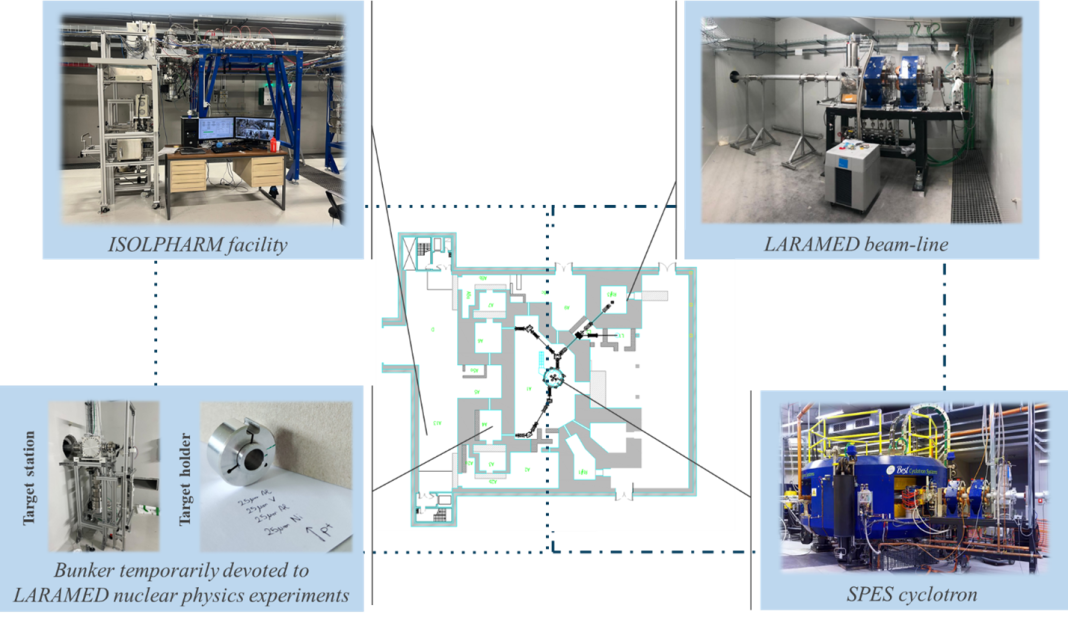The Italian Institute for Nuclear Physics conducts cutting-edge research in the field of nuclear, particle, and astroparticle physics, as well as in developing technologies for research and their applications to benefit society
Founded in 1951, the Italian Institute for Nuclear Physics (INFN) is the public research institute that has taken up the scientific legacy of Enrico Fermi for more than seventy years.
Among the four INFN National Laboratories, the Legnaro National Laboratories (LNL, Legnaro, Padova) are internationally recognised for conducting state-of-the-art research in the field of nuclear physics and its applications, thanks to the five particle accelerators and related technologies available there.
Selective Production of Exotic Species project
The LNL’s future lies in the SPES (Selective Production of Exotic Species) project, which aims to provide a unique facility for both basic research in nuclear science and applied research in the production of radioisotopes for medical purposes. The heart of SPES is a high-power cyclotron that accelerates protons up to 70 MeV with very high intensities, reaching 700 μA.
On the European landscape, SPES will be the only facility capable of contributing to innovative radionuclide production using two complementary methods: the direct activation method, utilising the LARAMED facility, and the ISOL technique, employing the ISOLPHARM facility.
The direct activation method consists of the proton irradiation of a dedicated target, whose manufacture is specifically optimized to produce the medical radionuclide of interest (i.e., material, isotopically enrichment, purity, thickness, etc.), that after the bombardment has to undergo a radiochemical process to extract and purify the medically relevant radioisotope from all the irradiated material, including the co-produced contaminants.
On the other hand, in the ISOL technique, the proton beam impinges on a thick Uranium Carbide (UCx) target, generating a characteristic set of fission fragments, most of which are released from the latter due to the high operational temperature levels, generally above 2000°C. The released nuclei migrate towards an ion source where neutral atoms are transformed into singly charged positive ions that can be extracted into a particle beam thanks to intense electric fields.
The extracted radioactive ion beam is further transported, focused, and injected into a Wien filter, an electromagnetic velocity separator that is used as a mass spectrometer. Such a device is employed to deflect and dump the beam particles, which are characterized by a different mass than the ions of interest. The output of the Wien filter is an ideally isobaric ion beam, composed of the radionuclide of interest together with possible contaminants of other chemical elements with the same mass, that can be collected onto appropriate deposition substrates. The complementarity of the methods ensures, at SPES, a high versatility in the production of emerging radionuclides, which are currently in the spotlight of the scientific community, and whose supply is yet limiting their preclinical and clinical use.
Therapeutic and diagnostic procedures
The key role of new medical radionuclides for innovative radiopharmaceuticals is the possibility to adapt the emitted radiation for early diagnosis (i.e., using γ or β+ emitters) or tailored therapy (i.e., using α, Auger, and conversion electrons or β- emitters). Lately, with the “theranostic” approach, i.e., the use of a single radionuclide or pairs that can be labelled to the same radiopharmaceutical, it is possible to perform both therapeutic and diagnostic procedures.
The main advantage of theranostic radiopharmaceuticals is the ability to select patients with a high chance of responding positively to a specific treatment, thereby avoiding the administration of unnecessary (and expensive) drugs. In fact, it is possible first to use a diagnostic radionuclide to obtain a SPECT (Single Photon Emission Computed Tomography) or PET (Positron Emitted Tomography) image to verify the correct uptake of the tissue of interest, followed by the administration of the right therapeutic amount using the same radiopharmaceutical labelled with a radionuclide whose radiation is useful for the treatment.
The medical community is thus fostering the development of emerging radionuclides (both for diagnosis and therapy) to meet the specific needs of each patient. In this framework, the SPES research activities focus on the innovative theranostic radionuclides 67Cu, 47Sc, 155Tb, and 111Ag, in addition to those useful for imaging (99mTc and 52Mn), thereby fostering preclinical and clinical studies in this field.
Collaborative research efforts
These research activities are carried out thanks to a wide national and international network of collaborations with many Italian Universities (such as Ferrara, Milano, Padova and many others), the CNR in Milano, the LENA laboratory (Pavia), the Istituto Oncologico Veneto IOV_IRCCS (Padova), the Sacro Cuore Don Calabria hospital (Negrar, Verona), the Policlinico Sant’Orsola Malpighi (Bologna), the Cannizzaro hospital (Catania), the Bambin Gesù hospital (Roma) and other Italian research centres.
The strategy of INFN-LNL through the SPES facility is to enhance the R&D output for theranostics, on the one hand, and to provide radiopharmaceuticals based on these innovative radionuclides to the medical sector in a joint venture with private and public initiatives related to this effort. The SPES facility will thus contribute, with both described methods, to the development of new medically relevant radionuclides, with specific chemical-physical characteristics, to obtain innovative radiopharmaceuticals able to meet the requirements of each specific patient, an important step towards personalized medicine, that can be resumed with the well-known sentence about the five-“right”: The right patient, the right drug, the right dose, the right route and the right time.


